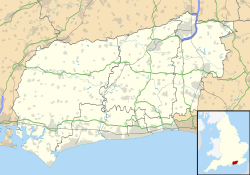| North Ambersham | |
|---|---|
 Heathfield Hanger | |
Location within West Sussex | |
| Civil parish | |
| District | |
| Shire county | |
| Region | |
| Country | England |
| Sovereign state | United Kingdom |
North Ambersham is a former civil parish, now in the parish of Fernhurst, in the Chichester district of West Sussex, England. Until 1844 North Ambersham was a detached part of Hampshire and was a tithing of the parish of Steep. Under the Parliamentary Boundaries Act 1832 (2 & 3 Will. 4. c. 64) and the Counties (Detached Parts) Act 1844 (7 & 8 Vict. c. 61), it was annexed to Sussex. For ecclesiastical purposes this tithing was attached to Fernhurst. [1] In 1866 North Ambersham became a separate civil parish, [2] on 1 April 1972 the parish was abolished and merged with Fernhurst. [3] In 1971 the parish had a population of 176. [4]
